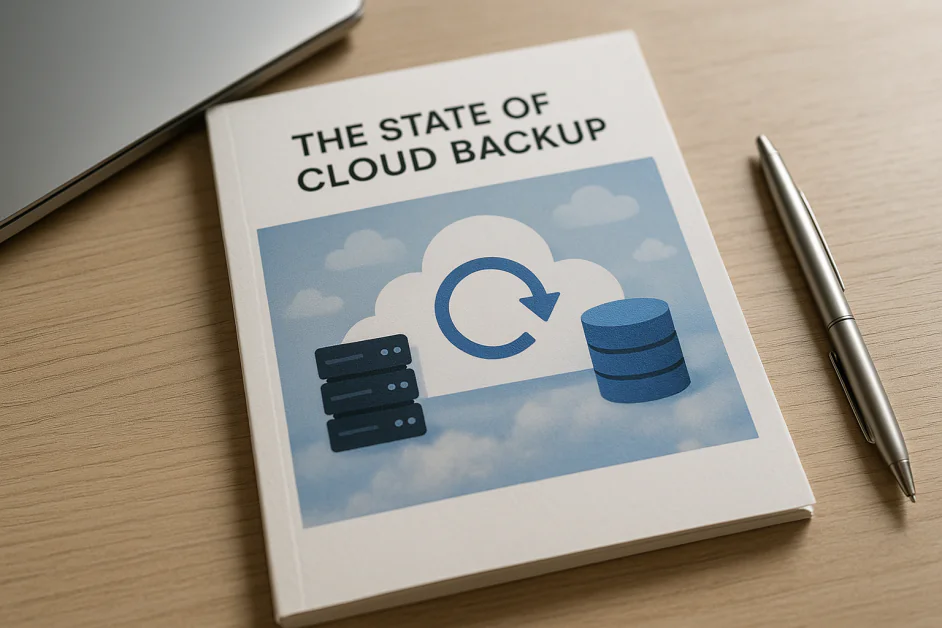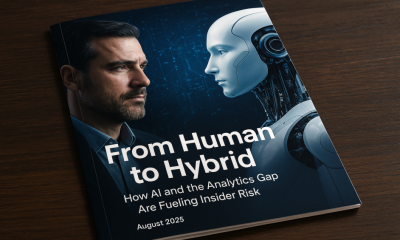Reports
Eon’s State of Cloud Backup Posture Management 2025 Report Exposes Dangerous Gaps in Enterprise Resilience

With more than 60% of corporate data now stored in the cloud, reliable backups should be a given. Yet, according to Eon’s newly released State of Cloud Backup Posture Management 2025 Report, backup strategies remain alarmingly out of sync with the needs of modern enterprises. Based on findings from 154 cloud and IT leaders surveyed at Google Cloud Next, the report reveals that most organizations are still relying on outdated tools and processes that fail to support today’s dynamic, multi-cloud environments.
Backup Is Not Keeping Pace With Cloud Complexity
While cloud infrastructure has evolved to support rapid scaling, distributed deployments, and AI workloads, backup infrastructure has stagnated. Eon’s report shows that 38% of organizations still rely solely on disaster recovery (DR) tools provided by their cloud vendor—or have no structured backup strategy at all. Meanwhile, 51% are operating on manual or semi-automated systems that are fragmented, brittle, and slow to recover.
This misalignment creates operational blind spots. In today’s complex multi-cloud environments, backup strategies that depend on static snapshots and periodic audits are no longer sufficient. Teams are unable to reliably track which assets are protected, enforce consistent retention policies, or recover quickly from failures. The report calls out the need for a backup framework that is both posture-aware and business-aligned.
Enterprises Are Losing Confidence in Their Own Backups
Eon’s survey data paints a troubling picture of trust and visibility. Only 21% of respondents are confident that their current backup infrastructure is cost-efficient or recovery-ready. Even more concerning, 39% of respondents either experienced cloud data loss or don’t know whether their backups are secure.
In reported cases of data loss, 64% were caused by human error, while nearly 25% were the result of ransomware. Despite this, most organizations continue to use fragmented backup tools that make it hard to enforce policy or detect issues before they escalate. A majority of environments lack centralized oversight, leaving teams to navigate risk with limited visibility and no guarantee of recoverability.
Cloud Backup Posture Management (CBPM) Is the Way Forward
To address this, Eon introduces a modernized framework: Cloud Backup Posture Management (CBPM). Rather than treating backups as static insurance, CBPM transforms them into an orchestrated, intelligent control layer. This approach emphasizes real-time visibility into backup status, automated classification of cloud assets, dynamic enforcement of policies, and posture scoring to surface misconfigurations before they cause harm.
Where traditional backup focuses on storage and recovery, CBPM repositions backup as infrastructure—fully aligned with compliance, security, and operational agility. It enables faster recovery, reduces human error, and ensures organizations can adapt to new risks or regulatory demands without rearchitecting from scratch.
Untapped Potential: Backup as a Strategic Data Asset
Perhaps the most forward-looking insight in the report is the realization that backups aren’t just for emergencies—they’re also one of an organization’s most valuable data resources. Backups often contain the largest volume of historical, operational, and user data, making them ideal for training AI models, running compliance audits, testing environments, and deriving business intelligence.
Yet, despite 81% of respondents agreeing that queryable backup data would add clear value, only a small fraction of organizations have structured their backups to enable this kind of use. Common barriers include poor indexing, lack of cross-cloud visibility, and backups that are trapped in rigid, outdated formats. Unless organizations rethink their backup architecture, these data assets will remain invisible and unused.
The Ransomware Risk Is Escalating
The report also highlights a critical blind spot in enterprise security: ransomware protection. While ransomware threats are increasingly cloud-native, adapting to modern infrastructure with lateral movement and speed, backup defenses remain shockingly inadequate.
According to the report, 13% of organizations have no protection for their cloud backups, and 57% rely on only a single defensive layer. Without proper isolation, immutability, and behavioral monitoring, backups are easily compromised after a primary system breach. This renders recovery impossible precisely when it’s needed most.
CBPM addresses this by enforcing multi-layered ransomware resilience. Features like immutable snapshots, policy-driven restores, and real-time anomaly detection ensure that backup data remains a viable lifeline—even under attack.
What Teams Want From the Next Generation of Backup
In addition to diagnosing today’s failures, the report also outlines a vision for the future. Teams surveyed expressed strong interest in the following next-gen features:
- Granular recovery APIs that allow restoring individual objects instead of entire volumes
- Seamless support across cloud, SaaS, and hybrid environments
- AI-driven posture scoring to detect misconfigurations early
- Integration with data lakes for real-time analytics, audits, and AI/ML training
These capabilities reflect a broader evolution: backup is no longer just an operational tool—it’s a platform for business insight, risk management, and innovation.
Why Backup Posture Is a Strategic Priority for Enterprises
For large organizations, backup posture is not just a technical detail—it’s a strategic necessity. Enterprises face high volumes of data, growing regulatory obligations, and increasingly sophisticated threats. When backup infrastructure falls short, the risks multiply: downtime, non-compliance, data loss, and reputational damage.
Effective posture management ensures that backup systems are aligned with business priorities. It means critical data is instantly recoverable, audit-ready, and cost-efficient. It also allows businesses to extract strategic value from backup archives—using them to train AI models, accelerate analytics, and fuel operational intelligence.
As Eon’s report makes clear, enterprises that embrace posture-driven backup will not only reduce risk but unlock new capabilities. Backups will no longer be a hidden cost—they’ll become a core asset.
Conclusion: The Time to Act Is Now
The State of Cloud Backup Posture Management 2025 Report highlights a stark reality: backup strategies across the industry have not kept pace with the evolution of cloud computing. As enterprises embrace multi-cloud architectures, AI integration, and real-time operations, the old models of backup—built around static snapshots and manual routines—are increasingly inadequate.
Organizations that continue to rely on fragmented tools, inconsistent policies, and delayed recovery processes are at growing risk. Data loss, ransomware attacks, compliance failures, and operational slowdowns are no longer edge cases—they’re common and costly. Meanwhile, regulatory demands and data volumes continue to climb.
The solution isn’t just to store more backups—it’s to rethink how backups are managed. Across the industry, there is a growing recognition that backup needs to become more than a safeguard. It must be intelligent, automated, and aligned with business priorities. That means gaining real-time visibility, enforcing policies dynamically, and unlocking backup data as a usable, searchable resource.
Strong backup posture is becoming a core requirement for operational resilience, regulatory compliance, and data-driven strategy. Enterprises that treat it as such will be better positioned to handle disruption, meet legal obligations, and extract greater value from their cloud infrastructure.












